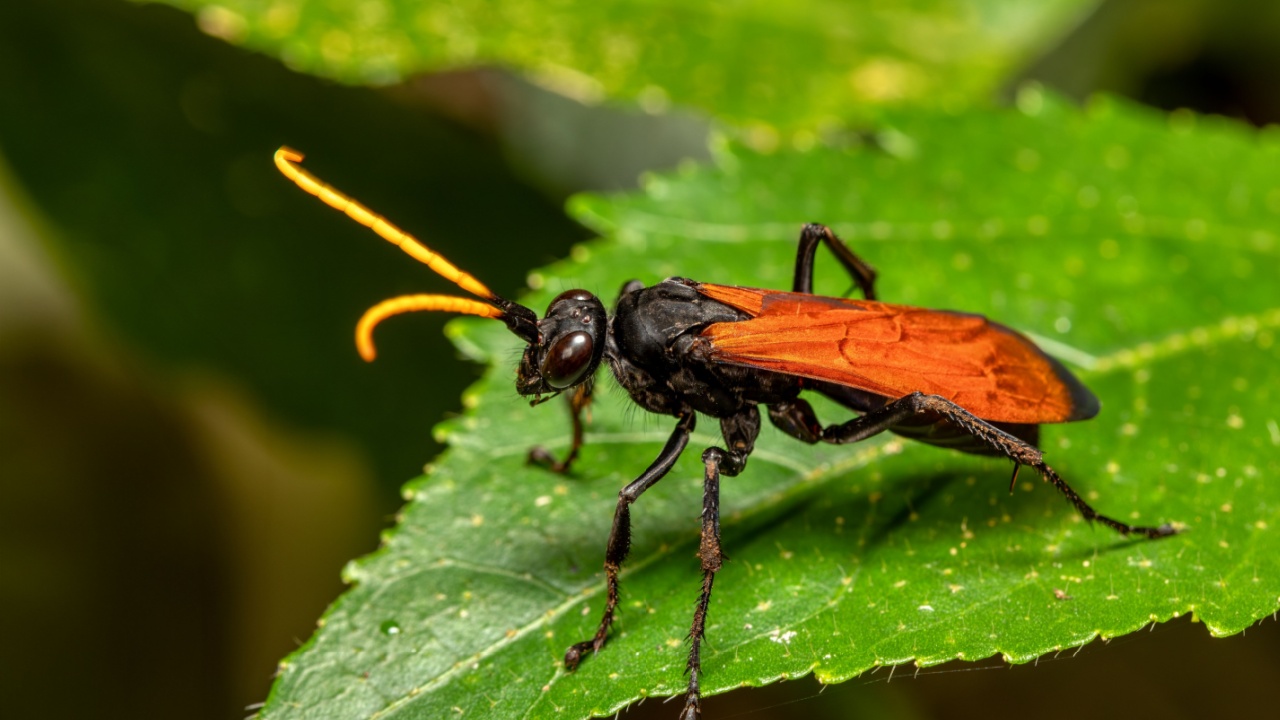24 Most Dangerous Insects in the U.S.

Our relationship with insects isn’t always the best. Americans spend billions of dollars yearly on bug sprays and pesticides, and this might be for a good reason. Insects can spread disease, be annoying, or cause injuries such as stings and bites.
Some people may confuse insects with spiders and other critters. True insects have six legs, while spiders have eight and are arthropods. Some insects can jump super high, while others zoom through the air. Species occupy diverse roles, performing vital duties in ecosystem harmony.
Let’s explore the world of the most dangerous insects in the U.S.
Mosquitoes

Mosquitoes are small, thin insects with long legs and sharp mouthparts. They are under half an inch long, but they spread several diseases. They transfer dengue, malaria, chikungunya, and Zika.
Every year, mosquitoes infect between 300 to 500 million people and kill about 2.7 million. In the U.S., 12 types of mosquitoes spread diseases. They also endanger dogs by transmitting heartworms. Thus, preventing these infections in pets is vital.
Aphids

Aphids are small sap-sucking insects and a danger to plants. These tiny monsters wreak havoc in gardens, farms, and greenhouses. They are usually less than a quarter of an inch long and can be green, black, or white.
Aphids pierce plant tissues and extract sap, weakening the plant. This might also cause stunted growth. Beyond direct damage, aphids excrete a sticky substance called honeydew. Honeydew promotes the growth of sooty mold, further hindering photosynthesis. They are also notorious for spreading plant viruses and diseases as they move from one host to another.
Fire Ants

Fire ants are reddish-brown with a shiny appearance and measure about a quarter of an inch long. These ants are quite aggressive. Their stings are painful and feel like a burn.
Fire ants can cause painful allergic reactions in some people, which can lead to life-threatening anaphylaxis. They build large mounds in open, sunny areas and swarm when disturbed. Avoiding their nests and wearing protective clothing can help prevent stings.
Tarantula Hawks

Tarantula hawks are large wasps about two inches long with metallic blue-black bodies. You’ll also notice their unmistakable bright orange wings. Theirs is considered one of the most painful stings you can experience and can cause temporary paralysis.
These wasps hunt tarantulas, and you can find them in desert regions. Despite their painful sting, they are generally not aggressive toward humans unless provoked.
Wheel Bugs

Wheel bugs are large, grayish-black insects with a wheel-shaped crest on their backs. They are about one and a half inches long. Their painful bite causes swelling and a burning sensation.
These bugs are beneficial predators in gardens, feeding on pest insects. However, handling them can result in a painful bite, so it’s best to avoid direct contact with them.
Africanized Honey Bees (Killer Bees)

Africanized honey bees are small but more aggressive than other normal bees.
Whenever there’s a threat, these bees swarm to attack, making their stings risky. Although their venom isn’t more potent than regular bees, many stings can be harmful. It’s wise to avoid them and call experts for hive removal.
Paper Wasps

Paper wasps are one inch long and have long, delicate legs in yellow, brown, or red hues. They have a reputation for delivering painful stings. These stings also cause severe allergic reactions and swelling.
Paper wasps build their nests under bushes, behind eaves, and in other protected spots. They are usually not hostile, but they fight hard to defend their nests. To avoid stings, keep a safe distance and use pest control measures.
Bald-Faced Hornets

Bald-faced hornets are approximately three-quarters of an inch long. These insects are usually black with white markings on their thoraxes and faces. They are fierce, and their stings can cause severe swelling and allergic reactions.
They build large, exposed nests in trees and shrubs. So, how can you evade their stings? For one, you can hire professionals to remove their nests. Don’t try to remove them yourself, for you will be sorry. If you are allergic to insect venom, their stings can cause severe harm.
Yellowjackets

Yellowjackets are roughly half an inch long, black and yellow. These social wasps are hostile and most active in summer and fall. Their burning stings can induce severe allergic responses, including anaphylaxis.
Yellowjackets often build their nests in buildings or on the ground. The best way to avoid confrontations is to cover your food and trash and be aware of their presence.
Locusts

If you ever notice a swarm of locusts flying nearby, report it immediately. Why?
Locusts are a threat to food security. One large swarm can clear out an entire field of any crop in minutes, let alone hours. These grasshopper-like insects can change behavior and form dense groups. Locusts do this when conditions are favorable.
The voracious feeding of locusts strips fields, orchards, and pastures bare. This leads to significant crop losses and economic hardship for farmers.
Kissing Bugs

Kissing bugs, or triatomine bugs, are about an inch long. They have elongated bodies and cone-shaped heads. They can spread Chagas disease, which is a severe illness that can cause heart and gastrointestinal diseases.
These insects bite at night around the lips and eyes. The bite site can provide an opening for their feces to enter the body. They ofent live in rural regions with substandard housing. To lower the chance of bites, use bed nets and seal gaps around doors and windows.
Asian Giant Hornets

Asian giant hornets (aka “murder hornets”) are the largest hornets in the world, measuring up to two inches long. Their sting is excruciating and can cause severe allergic reactions.
If agitated, these hornets may kill whole honeybee colonies and endanger people. For your protection, stay away from their nests and notify the authorities if you see them. Their influence on local ecosystems has caused great worry due to their presence.
Blister Beetles

Blister beetles are soft, elongated insects about an inch long. They can be dull or vibrant in color. When you touch these beetles, they produce a chemical known as cantharidin. This toxin is irritating and can cause excruciating blisters.
These beetles can be toxic to humans and animals, so it’s important to wear gloves when gardening and working with plants. The gloves will shield your skin from a potential injury.
Assassin Bugs

Assassin bugs are brown or black, about an inch long, and have elongated bodies. When you touch them, they can deliver a painful bite.
Just like their cousins the kissing bugs, some species of assassin bugs can spread Chagas disease. To avoid bites and disease, stay away from them and wear protective clothing.
Carpenter Ants

Carpenter ants are huge ants that measure up to half an inch. They are usually black or red. Although these ants do not sting, their bite can be painful.
If you find their nest close by, look for ways to get rid of it. They cause major structural damage to wood and are especially attracted to moist, decaying wood. So, keep your home dry and repair any water damage that moistens your wooden home. This will ensure you prevent infestations and protect your property.
Fleas

Fleas are tiny, wingless insects, about an eighth of an inch long. They feed on the blood of mammals and birds, causing itching and allergies.
Additionally, fleas can spread diseases like plague and typhus. They prefer warm, humid places. To control fleas and reduce the risk of bites, treat your pets and keep them clean.
Horseflies

Horseflies are big, fast insects, up to an inch long. Their bites hurt and can swell, itch, or spread diseases in animals.
You often find them near water and livestock. So, if you are a farmer, you must find ways to keep horseflies away from your animals. Insect-repellent and protective clothing can reduce the risk of bites.
Stable Flies

When you look at stable flies, you might mistake them for houseflies. But there is a significant difference. These flies feed on blood and measure about a quarter of an inch long. Their bites are painful and can cause irritation and allergic reactions.
There is a reason for calling them stable flies. You will find them around livestock in stables and decaying organic matter. Ensure effective waste management systems and deploy fly control strategies.
Southern Flannel Moth Caterpillars (Puss Caterpillars)

Southern flannel moth caterpillars are about an inch long with dense, hair-like fibers. Despite their soft appearance, they have venomous spines.
Touching these caterpillars can cause severe pain, swelling, and nausea. It may even affect breathing. You can find them on trees and shrubs in the southeastern U.S.
For this reason, it’s best to avoid touching them and to warn others about their sting.
Bed Bugs

Bed bugs are tiny, flat, reddish-brown insects, about a quarter of an inch long. They feed on human blood at night, causing itching, allergies, and sleep problems.
You often find them in bedding and furniture. What is the best way to keep your home comfortable and pest-free? Regular checks and cleaning can prevent infestations.
Velvet Ants

Velvet ants, or cow killers, are not ants at all, but actually a type of wasp. They have bright red or orange furry bodies that are about an inch long. Their sting is agonizing and can cause swelling and allergic reactions.
They are most often found in dry, sandy areas such as Texas, Arizona, and New Mexico. To stay safe, avoid walking barefoot; these wasps burrow underground where they lay their eggs.
Cicada Killer Wasps

Cicada killer wasps are giant, solitary wasps with black and yellow bodies. They are approximately two inches in length. Their sting is painful but not lethal to humans.
These wasps prey on cicadas and are often found in sandy, open areas. They are generally not aggressive unless provoked. You can reduce the risk of being stung by wearing shoes when walking outside. In the summer, watch for their nest and avoid wearing strong-scented perfumes.
Asian Tiger Mosquitoes

Asian tiger mosquitoes are striking and you would never miss them. They have black and white striped bodies. They are aggressive feeders and are quite notorious for their relentless bites.
Originally from Asia, they’ve become common in the U.S., thriving in warm climates and areas with standing water. Their bites can cause itching and swelling, and they are known vectors for West Nile virus and other illnesses.
Asian Lady Beetles

Asian ladybeetles are often confused with native ladybugs. But they are orange and have an “M”-shaped mark on their backs. These beetles are about a quarter of an inch long. In some people, they can trigger allergic reactions, causing skin or breathing problems.
In the fall, they gather indoors in large groups. To prevent them from coming into your home, seal entry points and use insect screens.





